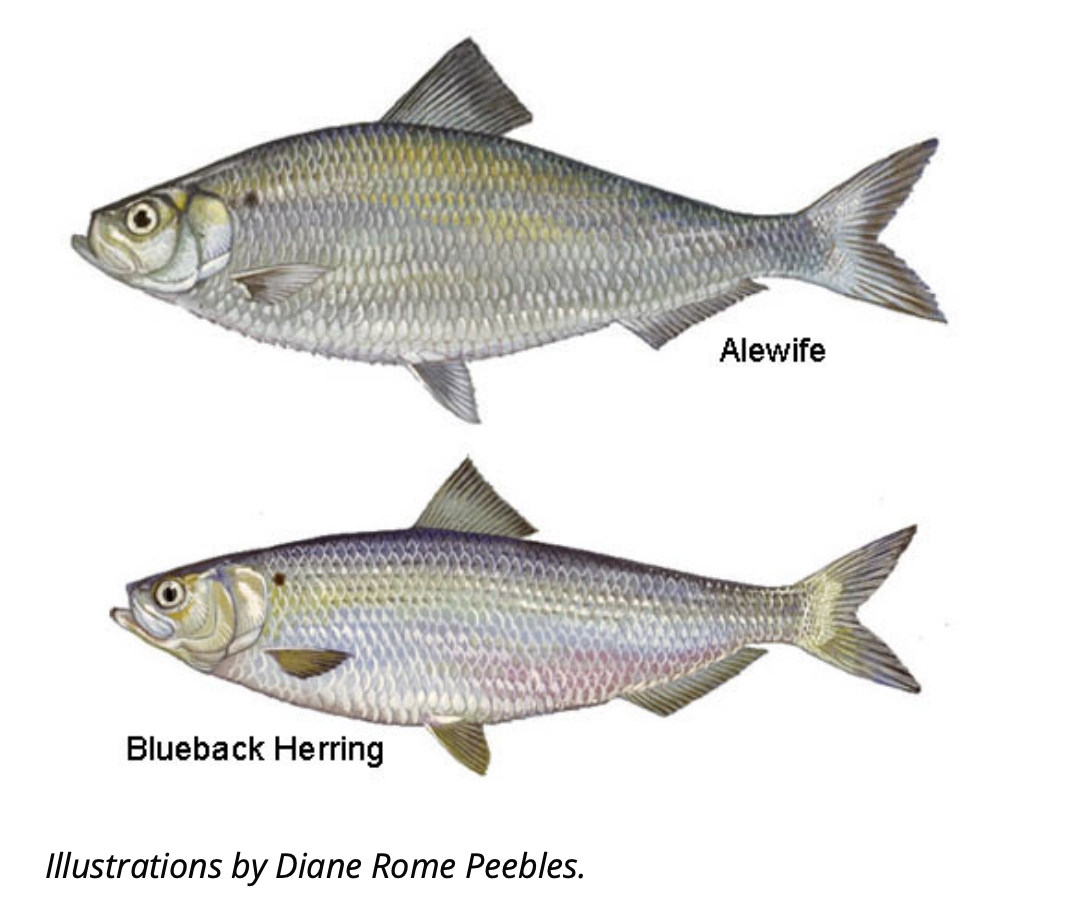By Lucy Kates, MyRWA volunteer
This spring, we’ve been gearing up for an exciting rite of passage in the Mystic: the migration of river herring. This migration is a key part of the river herring life cycle and monitoring the migration provides important information on the health and accessibility of our river to freshwater life.
The term “River Herring” comprises two closely-related species: Alewife and Blueback Herring. They are found across the East Coast from Maine to Florida, though a significant population can be found off the coast of Massachusetts. These fish are anadromous, meaning that they spend most of their lives in the Atlantic but return every 3-4 years to their natal Mystic River to spawn.
Commercial overfishing has wreaked havoc on river herring populations beginning in the mid-1900’s, though that hasn’t been the only threat posed to the fish. Dams in freshwater streams where the herring spawn are a major obstacle to their reproduction.
Since 2012, MyRWA has put significant work into extending accessible spawning habitat along the Mystic. Installing a fish ladder along the dam that separates the Upper and Lower Mystic Lakes increased available spawning area by a factor of 1.6x. By 2019, the number of herring spawning in the river had more than tripled! Explore this ecological success story here.
So, where are the herring before they come to the Mystic River? They generally start travelling up the Mystic River in mid-April; but the exact moment is dependent primarily on water temperature. Once the temperature indicates that it is time to migrate, the herring will swim from Cape Cod Bay in late March up to Massachusetts Bay and inshore to Boston Harbor in mid-to-late April, before entering their natal rivers.
Credit: Amber Christoffersen
Alewives typically return to the river sooner than Bluebacks, and they travel to upstream ponds and lakes, while the Bluebacks tend to spawn in main stem sections of the river. Spawning begins when the river temperature is 51°F and 57°F, respectively; they remain in the river until late summer, when the young fish are about 1.5-2.5 inches long.
As the Alewives and Bluebacks swim into Boston Harbor and ready themselves for their migration, volunteers across the Mystic River Watershed are stationed along the river (at Mystic Lakes Dam and Horn Pond) to begin herring counts. Remote volunteers are also poised to help monitor the migration through our online counting system which launches on May 1st!
In May, as the herring dash up the Mystic, runners and kayakers will be racing and paddling their way along the river. To continue supporting the river herring of Massachusetts, don’t forget to sign up for the 26th Annual Mystic River Herring Run and Paddle by May 11th! More information can be found here.




